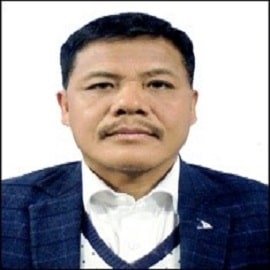Agenda
Conference Schedule
Day 1 full schedule
May 16, 2022 @ 10:00 - 10:50
Stereolithographic Additive Manufacturing of Functional Ceramic Components for Energy Flow Modulations

Soshu Kirihara
ProfessorOsaka University
Japan
ABSTRACT
In stereolithographic additive manufacturing (STL-AM), 2-D cross sections were created through photo polymerization by UV laser drawing on spread resin paste including nanoparticles, and 3-D models were sterically printed by layer lamination. The lithography system has been developed to obtain bulky ceramic components with functional geometries. An automatic collimeter was newly equipped with the laser scanner to adjust the beam diameter. Fine or coarse beams could realize high resolution or wide area drawings, respectively. As the row material of the 3-D printing, nanometer sized metal and ceramic particles were dispersed into acrylic liquid resins at about 60 % in volume fraction. These materials were mixed and deformed to obtain thixotropic slurry. The resin paste was spread on a glass substrate with 50 μm in layer thickness by a mechanically moved knife edge. An ultraviolet laser beam of 355 nm in wavelength was adjusted to 50 μm in variable diameter and scanned on the spread resin surface. Irradiation power was automatically changed for an adequate solidification depth for layer bonding. The composite precursors including nanoparticles were dewaxed and sintered in the air atmosphere. In recent investigations, ultraviolet laser lithographic additive manufacturing (UVL-AM) was newly developed as a direct forming process of fine metal or ceramic components. As an additive manufacturing technique, 2-D cross sections were created through dewaxing and sintering by UV laser drawing, and 3-D components were sterically printed by layer laminations with interlayer joining. Through computer-aided smart manufacturing, design, and evaluation (Smart MADE), practical material components were fabricated to modulate energy and material transfers in potential fields between human societies and natural environments as active contributions to Sustainable Development Goals (SDGs).

Pradip Lingfa
DeanNorth Eastern Regional Institute of Science &Technology
India
ABSTRACT
Rapid escalation of fuel prices, shortage of conventional petroleum fuels and depleting hydrocarbon fuel reserves of the world have forced to look for alternatives fuels which can satisfy the increase in demands of energy. In the recent years, bio-energy and bio-fuels have become a major issue around the world, especially because of the rising oil prices on the one hand and of public awareness and concern on energy security and environment issues like climatic change on the other hand. Biodiesel refers to any diesel-equivalent bio-fuel made from renewable biological materials such as vegetable oils and animal fats suitable for use as a diesel fuel. Biodiesel can be use for running any diesel engine satisfactorily for getting reduced exhaust emissions without sacrificing the performance as compared to diesel fuel.



